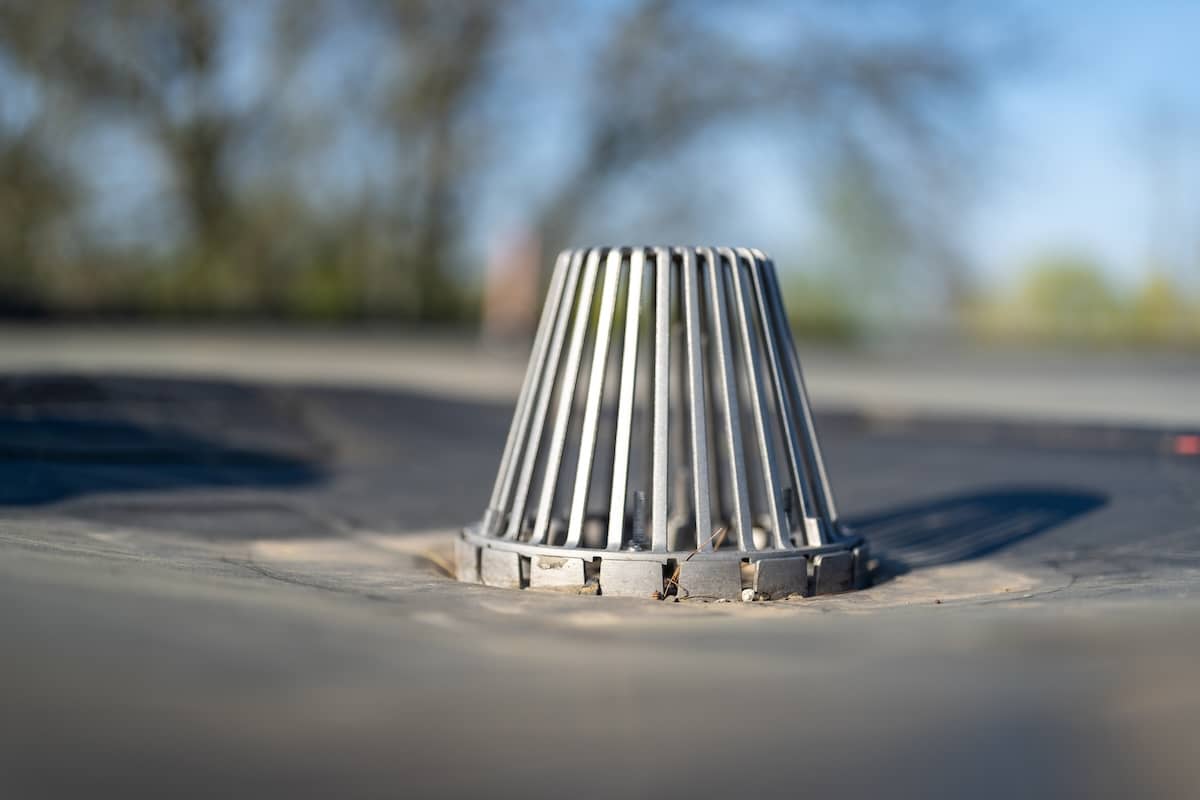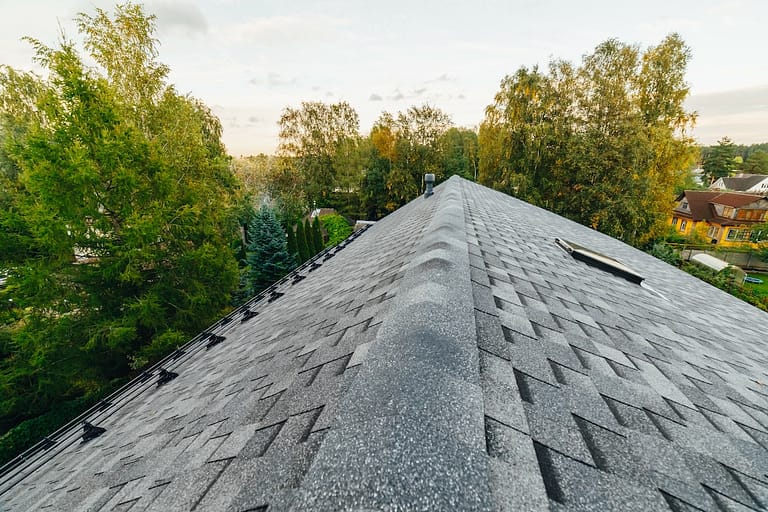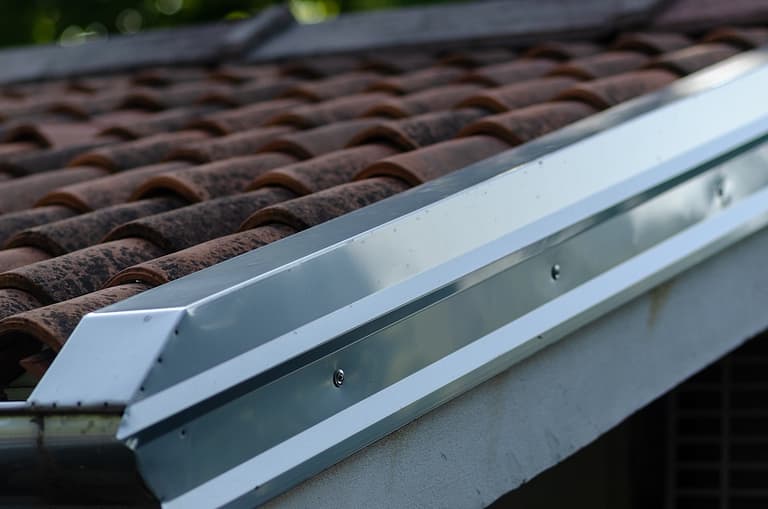Flat roofs are a popular choice for commercial buildings and modern residential homes due to their clean, minimalist aesthetic and cost-effective construction. However, unlike sloped roofs, flat roofs present unique challenges when it comes to drainage. Proper flat roof drainage is critical to maintaining the health and longevity of your roof and protecting your building from water damage.
At G. Cannon Roofing, we understand the importance of well-designed drainage systems for flat roofs. This article will walk you through everything you need to know about flat roof drainage, from:
- Its significance
- The types of drainage systems
- Maintenance tips
- Expert recommendations
Why Proper Drainage is Essential for Flat Roofs
While they may look flat, flat roofs are typically constructed with a slight slope—usually between 1/4″ and 1/2″ per foot—to allow water to flow toward drainage points. Without an effective drainage system in place, standing water (also known as “ponding water”) can accumulate, leading to serious issues such as:
- Structural Damage: Prolonged water pooling can add excessive weight to your roof, compromising its structural integrity over time.
- Leaks and Moisture Intrusion: Standing water can seep into cracks or seams, causing leaks and damage to the building’s interior.
- Accelerated Roof Wear: Water can cause materials, such as membranes, to deteriorate faster, reducing your roof’s lifespan.
- Mold and Mildew Growth: Persistent moisture creates an ideal environment for mold and mildew, which can compromise air quality and pose health risks.
Proper roof drainage helps mitigate these risks, ensuring a longer-lasting, durable roof that protects your property and everyone inside.
4 Common Flat Roof Drainage Systems
The right drainage system for your flat roof depends on the size of your roof, its slope, and your specific building requirements. Below are the most commonly used flat roof drainage systems:
1. Internal Drains
Internal drains are located near the center of the roof and are connected to a network of pipes under the roof, which direct water away from the building.
Advantages of Internal Drains:
- Concealed piping enhances the building’s appearance.
- Less risk of exposed pipes freezing during winter.
- Accommodates large volumes of water effectively.
Considerations:
- Requires regular maintenance to prevent clogs caused by debris.
- Installation can be more expensive due to complex piping systems.
2. Scuppers
Scuppers are openings or outlets along the edges of the roof. They allow water to flow off the roof and away from the building, often through attached downspouts or spouts.
Advantages of Scuppers:
- Cost-effective and easy to install.
- Prevent water from pooling on the roof.
- Can pair with decorative spouts for added aesthetic appeal.
Considerations:
- May not handle extremely heavy rainfall as effectively as other systems.
- Requires proper edge detailing to ensure water flows correctly.
3. Gutters
Gutters are external troughs installed along the edges of the roof to collect and channel water away from the building through downspouts.
Advantages of Gutters:
- A familiar and relatively simple drainage solution.
- Cost-effective for smaller roofs.
Considerations:
- Can get clogged with leaves and debris, requiring frequent maintenance.
- Susceptible to freezing and damage in colder climates without proper winterization.
4. Siphonic Drainage Systems
Siphonic systems use negative pressure to siphon water quickly and directly from the roof into underground drainage systems. This system is often used for larger flat roofs, such as those on commercial buildings.
Advantages of Siphonic Drainage:
- Extremely efficient in handling heavy rainfall.
- Reduces the need for multiple drain points.
- Minimizes water pooling risk.
Considerations:
- High upfront installation costs.
- Requires specialized expertise to design and maintain.
Choosing the Right Drainage System for Your Flat Roof
Selecting the appropriate drainage system involves evaluating your building’s specific requirements. Consider the following factors:
- Roof Size: Larger roofs typically require more drain points or specialized systems, such as siphonic drainage, to manage water efficiently.
- Climate: If your area experiences heavy rainfall or snowfall, a robust drainage system, such as internal drains or siphonic systems, is advisable.
- Budget: While scuppers and gutters are more cost-effective, high-performance options like siphonic systems may provide a better long-term solution.
- Building Design: Consider how the drainage system complements your building’s aesthetics and functionality. For instance, concealed internal drains may better suit modern designs.
- Maintenance Preferences: Choose a system that matches your maintenance capabilities. For example, if debris is a concern, scuppers may require less frequent cleaning than gutters.
At G. Cannon Roofing, our team of experts can assess your property and help you choose and install the ideal drainage system for your flat roof.
Common Flat Roof Drainage Problems and Solutions
Even the best-designed drainage systems can encounter issues over time. Here are some common problems and how to address them:
1. Clogged Drains
Debris such as leaves, dirt, and branches can block drains, causing water to back up and pool on the roof.
💡 Solution:
- Schedule regular gutter and drain cleanings, especially before and after storm seasons.
- Install drain guards to prevent larger debris from entering the system.
2. Improper Slope
A flat roof without an adequate slope can lead to water pooling and drainage problems.
💡 Solution:
- Consult a roofing professional to regrade the roof or install tapered insulation to create a proper slope.
3. Freezing and Ice Dams
Water that freezes in drains, gutters, or downspouts can cause blockages and potential damage.
💡 Solution:
- Insulate internal drains to prevent freezing.
- Use heat cables to keep gutters and downspouts clear during winter.
4. Drainage System Damage
Over time, wear and tear can lead to cracks, leaks, or overall system failure.
💡 Solution:
- Perform routine inspections to detect and repair issues early.
- Work with a trusted roofing contractor for regular maintenance and repair services.
Maintenance Tips for Flat Roof Drainage Systems
Regular maintenance is crucial to ensuring your flat roof drainage system remains effective. Follow these tips to prevent costly repairs and extend your roof’s lifespan:
- Inspect After Storms: Check for debris, damage, or pooling water after heavy rain or storms.
- Clean Regularly: Remove leaves, dirt, and other debris from drains, gutters, and downspouts at least twice a year.
- Check for Leaks: Inspect seals, joints, and drainage connections for signs of leaks or wear.
- Monitor Ponding Water: If water remains on your roof for more than 48 hours, consult a roofing expert for solutions.
- Schedule Professional Inspections: Partner with a reliable roofing contractor, like G. Cannon Roofing, to conduct annual inspections and preventive maintenance.
Why Choose G. Cannon Roofing for Your Flat Roof Drainage Needs?
At G. Cannon Roofing, we specialize in flat roof repair, maintenance, and drainage systems. Here’s why clients trust us with their roofing needs:
- Experience You Can Rely On: With years of industry expertise, we’ve seen it all. Our team is equipped to handle any flat roof challenge with precision and care.
- Customized Solutions: We tailor our drainage recommendations based on your unique property and budget.
- Quality Materials: We use only high-quality, durable materials to ensure your drainage system withstands the elements.
- Commitment to Excellence: Customer satisfaction is our priority, and we work tirelessly to exceed your expectations every time.
Protect Your Flat Roof with Expert Drainage Solutions
Your flat roof is an investment that deserves proper care and attention. With a well-designed drainage system and regular maintenance, you can protect your property from water damage, reduce long-term repair costs, and enjoy peace of mind.
Whether you need a new drainage system, repairs, or routine inspections, G. Cannon Roofing is here to help. Contact us today to schedule a consultation or learn more about our flat roof services. Together, we’ll ensure your roof stays strong and functional for years to come.








